For 1990-2009 cars only
Removal Procedure
Tools Required
| • | J 39500-B R-134a A/C Refrigerant Recovery, Recycling and Recharging System (ACR4) |
| • | J 5403 Snap Ring Pliers |
| • | J 23128-A Seal Seat Remover and Installer |
| • | J 9553-01 O-Ring Remover |
| • | J 39893 Pressure Test Adapter |
- Recover the refrigerant using the J 39500-B .
- Remove the compressor from the the vehicle. Air Conditioning Compressor Replacement in HVAC System-Manual.
- Remove the compressor shaft protector.
- Remove the clutch plate and hub assembly from the compressor. Refer to Compressor Clutch Plate/Hub Assembly Replacement .
- Remove the shaft seal retainer ring (1) using the J 5403 .
- Any dirt or foreign material in the compressor may cause damage. Thoroughly clean the following components:
- Fully engage the knurled tangs of the J 23128-A into the recessed portion of the seal (1) by turning the handle clockwise.
- Securely hand-tighten the handle. Do not use a wrench or pliers.
- Remove the seal (1) from the compressor using a rotary-pulling motion. Discard the seal.
- Remove and discard the seal seat O-ring (1) from the compressor neck using the J 9553-01 .
- Inspect the shaft and the inside of the compressor neck for dirt or foreign material. Ensure that the shaft and the inside of the compressor neck are perfectly clean before installing the new parts.
- Thoroughly clean the O-ring seal groove in the front head.
Important: Do not change a shaft seal because of small amounts of oil on an adjacent surface. Only replace a shaft seal after you find actual refrigerant leakage using an approved leak detector, such as J 39400 or equivalent.
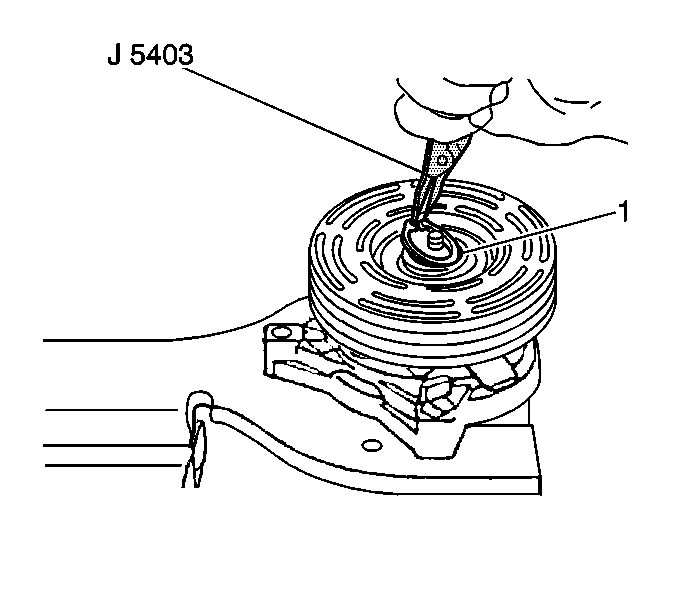
| • | The inside of the compressor neck area surrounding the shaft |
| • | The exposed portion of the seal |
| • | The retainer ring groove |
| • | The shaft |
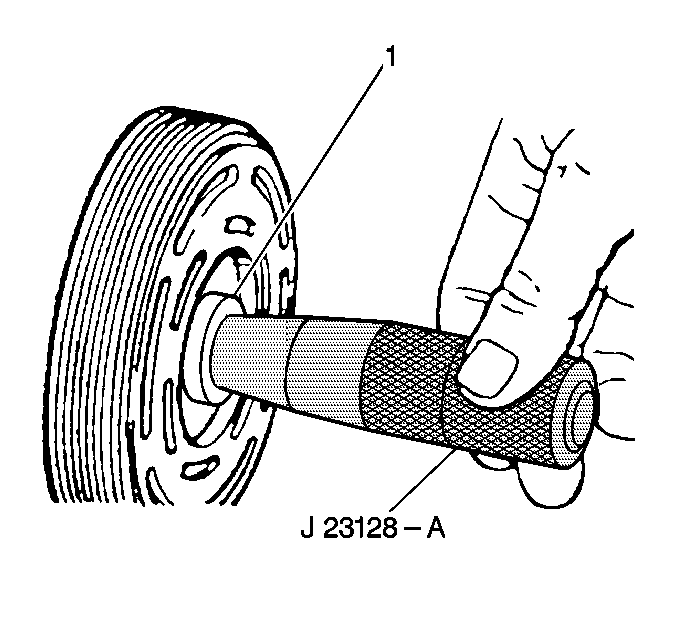
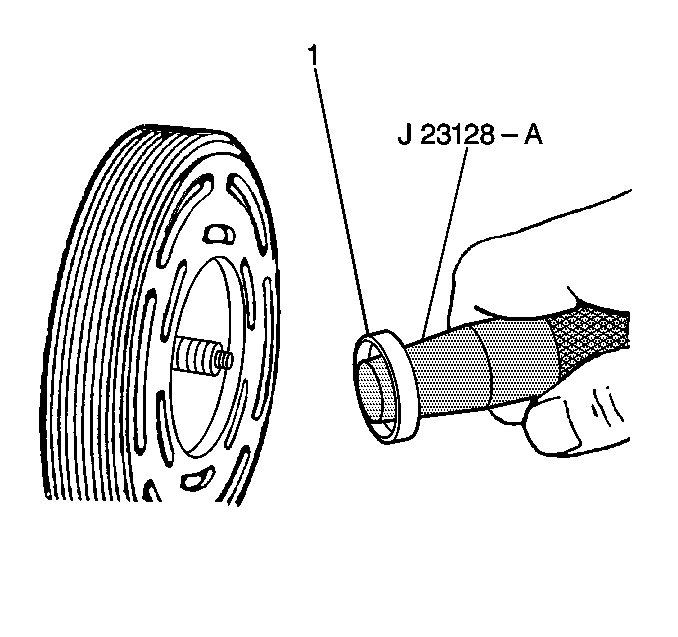
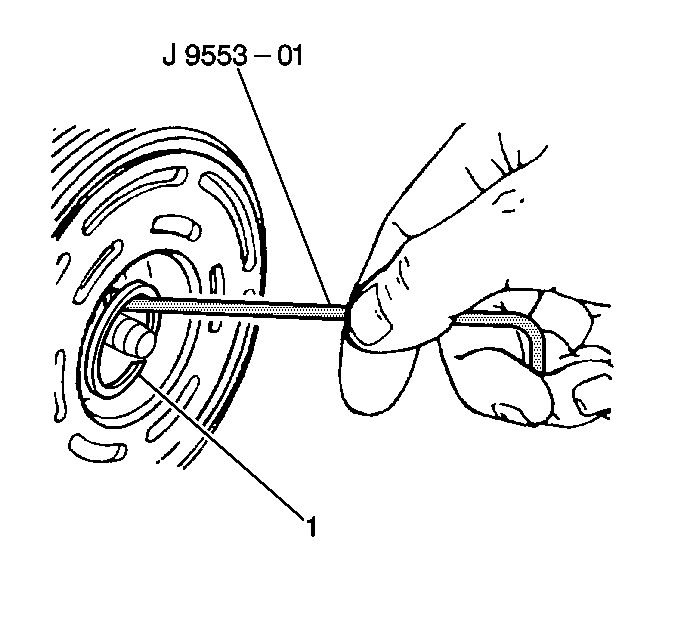
Installation Procedure
- Dip the new seal seat O-ring in clean 525 viscosity refrigerant oil. Assemble the new seal seat O-ring onto the J 33011 .
- Insert the J 33011 into the compressor neck until the installer bottoms.
- Lower the moveable slide of the J 33011 in order to release the O-ring into the seal O-ring lower groove. Do not release the O-ring into the compressor neck top groove.
- Rotate the J 33011 in order to seat the O-ring.
- Remove the J 33011 .
- Dip the new seal (1) in clean 525 viscosity refrigerant oil. Assemble the seal to the J 23128-A by turning the handle clockwise.
- Engage the knurled tangs of the J 23128-A with the stamped steel case side of the lip seal (1) in order to ensure that the flared-out side of the lip seal (1) faces toward the compressor.
- Place the J 34614 over the end of the compressor shaft.
- Slide the new seal (1) onto the shaft using a rotary motion until the seal stops.
- Using the J 5403 , install the new seal retainer ring (1) with the flat side against the seal. Use the sleeve from J 33011 in order to press in the seal retainer in order to ensure that the seal snaps into the groove.
- Perform a leak test using the following procedure:
- Remove any excess oil from the shaft and from the inside of the compressor neck.
- Install the clutch plate and hub assembly. Refer to Compressor Clutch Plate/Hub Assembly Replacement .
- Install the compressor shaft protector.
- Install the Compressor to the vehicle. Refer to Air Conditioning Compressor Replacement in HVAC System-Manual.
- Evacuate and charge the refrigerant system using the J 39400 or equivalent.
- Ensure that no leaks exist in the system. Refer to Leak Testing .
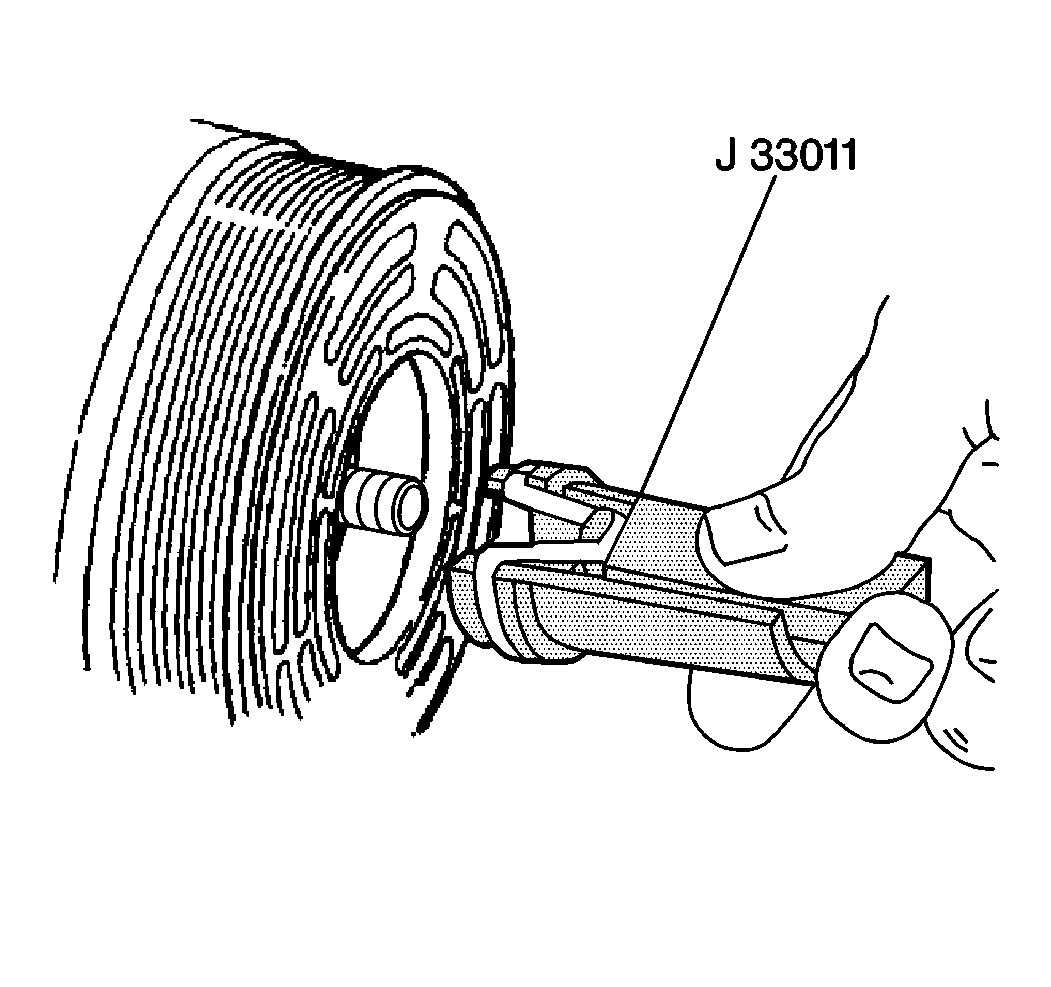
Notice: Seals should not be re-used. Always use a new specification service seal kit. Be sure that the seal to be installed is not scratched or damaged in any way. Make sure that the seal is free of lint and dirt that could damage the seal surface or prevent sealing.

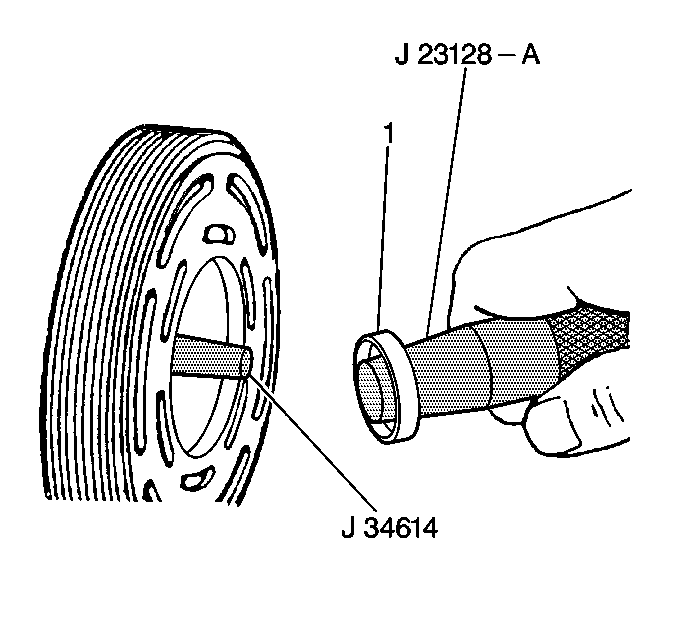
Notice: Handling and care of the seal protector is important. If the seal protector is nicked or the bottom flared, the new seal may be damaged during installation.

| 9.1. | Ensure that the seal contacts the O-ring. Do not dislodge the O-ring. Disengage the installer from the seal. |

| 11.1. | Install the J 39893 on the rear head of the compressor. |
| 11.2. | Use the J 39893 tool in order to bolt the pressure test adapter to the compressor. Connect the gauge charging lines and the J 39500-B . |
| 11.3. | Evacuate and charge the refrigerant system using the J 39400 or equivalent. |
Pressurize the suction and the high-side of the compressor using R-134a.
| 11.4. | Temporarily install a M9 x 1.25 threaded nut on the shaft. |
| 11.5. | Rotate the compressor shaft in the normal direction of rotation several turns by hand. |
